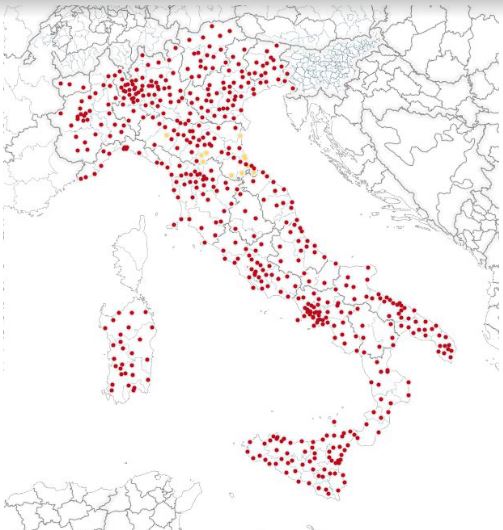Will the government be able to make Gol (Employability Guarantee)?

Gol (Employability guarantee for workers): objectives, resources, unknowns and scenarios. Giuliano Cazzola's analysis
In recent days, the newspapers reported that the first meeting between the government and the Regions on the GOL Program (Employability Guarantee) ended with a postponement because it was not possible to find an agreement on the criteria for the distribution of the first funds (880 million 20% of the total allocation).
The inter-ministerial decree (Labor and Economy) is already prepared with the indications of the first step of the program attached, which should be followed by the adoption of regional plans and the execution of at least 10% of the activities planned by 2022. The program target:
-Target 1: at least 3 million GOL beneficiaries by 2025. Of these, at least 75% must be women, long-term unemployed, people with disabilities, young people under 30, workers over 55;
– Target 2: at least 800 thousand of the above 3 million must be involved in training activities , of which 300 thousand for the strengthening of digital skills;
-Target 3: at least 80% of CPI in each region by 2025 meet the standards defined as essential levels in GOL.
Parallel to the GOL Program, as part of the PNRR, the Government is committed to the adoption of a National New Skills Plan. The main objective of the Plan is to define essential levels of professional training for the whole national territory.
Specifically, however, the Plan will make it possible to define more precisely the characteristics and standards of training for workers in transition and unemployed who will enter GOL.
Emphasis will also be placed on forecasting the new skills required by the labor market in the short and medium term. The program is very articulated and organized by phases and objectives; but the acronym itself indicates the strategy pursued.
Unlike the unrealistic objective of the proposal of three job opportunities in 18 months which served as a corollary of the Citizenship Income, the GOL Program and the New Skills Plan intervene upstream, through the training of the target subjects in order to provide them an adequate level of employability that conforms as much as possible to the needs of organizational and production standards, thus bridging a consolidated gap between a demand for work which does not correspond to an adequate offer.
Moreover, the objectives (the numbers and characteristics of the target subjects) are flattering, even if it is necessary to be precise with regard to some leaks forward circulated in the media: when it comes to three million "beneficiaries of the Goal" by 2025, reference is not made to three million new employees, but to an audience of people who are able to '"stay on the market"' following the changes and transformations taking place and expectations.
Having said all this, faced with such an ambitious program for the implementation of which significant resources are available (4.4 billion for the GOL Program alone, which is the core of funding also from other sources), one cannot escape the impression that the government, as they say, is putting the cart before the horse.
Where, how and with which structures these demanding challenges are faced. And speaking of challenges, the GOL Program must address that of proximity since it is considered essential for reforming active employment policies in the country that information, advice and guidance on the services offered be widespread and easily accessible.
It is in this sense – affirms the Program – that the employment centers, as a public territorial unit for the provision of active employment policies, must interpret their role as gateway to GOL.
To carry out this role, the employment centers must open up to the community, become services present and recognized in the territory, part of a network with the other local services. Considering the scarce capillarity – 550 employment centers throughout the country, therefore on average just under one structure for every 100 thousand inhabitants – it appears essential from this point of view to promote greater proximity to services.
THE DISTRIBUTION OF EMPLOYMENT CENTERS IN ITALY

The objective is the physical presence – even occasional – of a job center or decentralized office or branch or other structure at least every 40 thousand inhabitants. The resources are: 464 million for new hires in the CPI; 1.5 billion for the strengthening of the structures. To follow the process of the proposals it is good to remember what the PNRR provided for in the field of work.
FRAMEWORK OF MEASURES AND RESOURCES (BILLION EUROS): Total 6.66 billion
Areas of intervention / Measures
1. Active employment policies and employment support 6.01
Reform 1.1: Active employment policies and training 4.40
Reform 1.2: National plan to combat undeclared work –
Investment 1.1: Strengthening of Employment Centers 0.60
Investment 1.2: Creation of women's businesses 0.40
Investment 1.3: Gender Equality Certification System 0.01
Investment 1.4: Dual system 0.60
2. Universal civil service 0.65
Investment 2.1: Universal civil service 0.65
In addition to these resources, there are those made available by REACT-EU which, as required by EU legislation, are spent in the years 2021-2023 as well as those deriving from additional national programming, for a total of over 12 billion.
If the number of CPIs increases, more staff will be needed. The hiring of 11,000 employees is expected. But where do they find them? It is one thing to follow the working methods of the old Employment Offices (most of the staff now in force comes from there) substantially of an administrative nature; it is another '"ballgame"' knowing how to mediate between the supply and demand for work.
Not even the private employment agencies, which have been dealing with job intermediation for years, are not able to quickly pass from the now prevalent activity – which is administration – to placement. There is a risk of using state navigators. Even the ANPAL – although it has got rid of the man from Mississippi, it must be enabled to carry out its functions with a solicitude that for now is not seen.
Then the active policies move in a “dual” reference context, in the sense that the primary responsibilities remain with the Regions. It is undoubtedly foreseeable that the differences encountered with the government in the first meeting will soon be overcome.
But to carry on the GOL it will be necessary to do the opposite of what Ricordo Lombardi said about the construction of a socialist economy: “We need to change the engine without stopping the car”. In our case, there is a risk of producing a car with a pedal engine.
This is a machine translation from Italian language of a post published on Start Magazine at the URL https://www.startmag.it/economia/il-governo-riuscira-a-fare-gol-garanzia-occupabilita-lavoratori/ on Sun, 10 Oct 2021 07:03:49 +0000.
